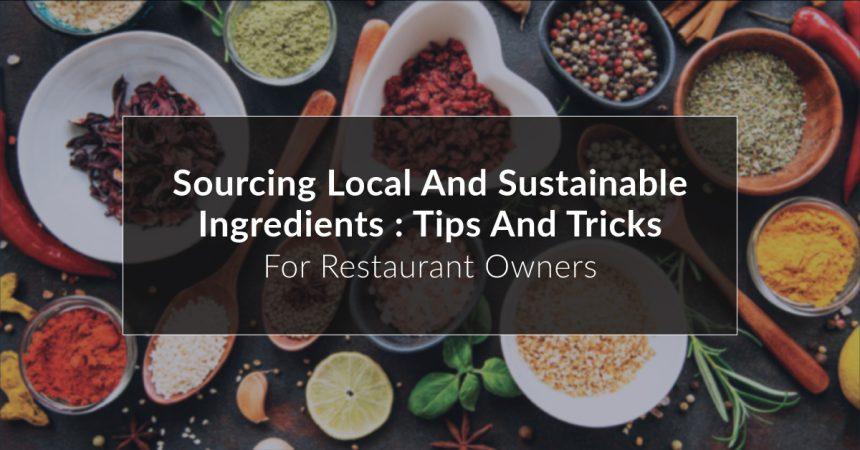Sourcing local and sustainable ingredients can be a great way to improve the quality of your food, support local farmers and businesses, and reduce your environmental impact. Here are some tips and tricks for restaurant owners looking to source local and sustainable ingredients:
- Research local farmers and suppliers
Start by researching local farmers and suppliers who can provide you with fresh, seasonal produce, meat, and dairy products. Look for farmers’ markets and food co-ops in your area, and attend local food events to meet and connect with farmers and suppliers.
- Build relationships with suppliers
Building strong relationships with your suppliers is key to securing the best prices and ensuring a consistent supply of high-quality ingredients. Get to know your suppliers, their products, and their growing practices. Consider signing long-term contracts with suppliers to guarantee the availability of ingredients.
- Create seasonal menus
One of the best ways to source local and sustainable ingredients is to create seasonal menus that feature ingredients that are in season and readily available in your area. This not only ensures the freshness and quality of your ingredients but also supports local farmers and reduces your carbon footprint by minimizing the need for transportation.
- Minimize food waste
Minimizing food waste is an essential part of sustainable food sourcing. Consider using all parts of the ingredients, such as vegetable scraps for stocks and sauces, and use proper storage techniques to extend the shelf life of perishable ingredients.
- Consider organic and non-GMO products
In addition to sourcing local ingredients, consider using organic and non-GMO products to reduce the use of pesticides and support sustainable growing practices.
- Communicate your sourcing practices to customers
Communicate your sourcing practices to your customers by featuring the farms and suppliers you work with on your menu or website. This not only demonstrates your commitment to sustainability but also helps build trust and loyalty with your customers.
- Be prepared for price fluctuations
Sourcing local and sustainable ingredients can come with a higher price tag than conventional ingredients, so be prepared for price fluctuations and adjust your menu prices accordingly. Consider offering smaller portions or adding a surcharge to offset the higher costs.
In conclusion, sourcing local and sustainable ingredients is not only beneficial for your business but also for the environment and the local community. By following these tips and tricks, you can source high-quality ingredients, build strong relationships with suppliers, and create delicious, sustainable menus that your customers will love.



Leave a Reply